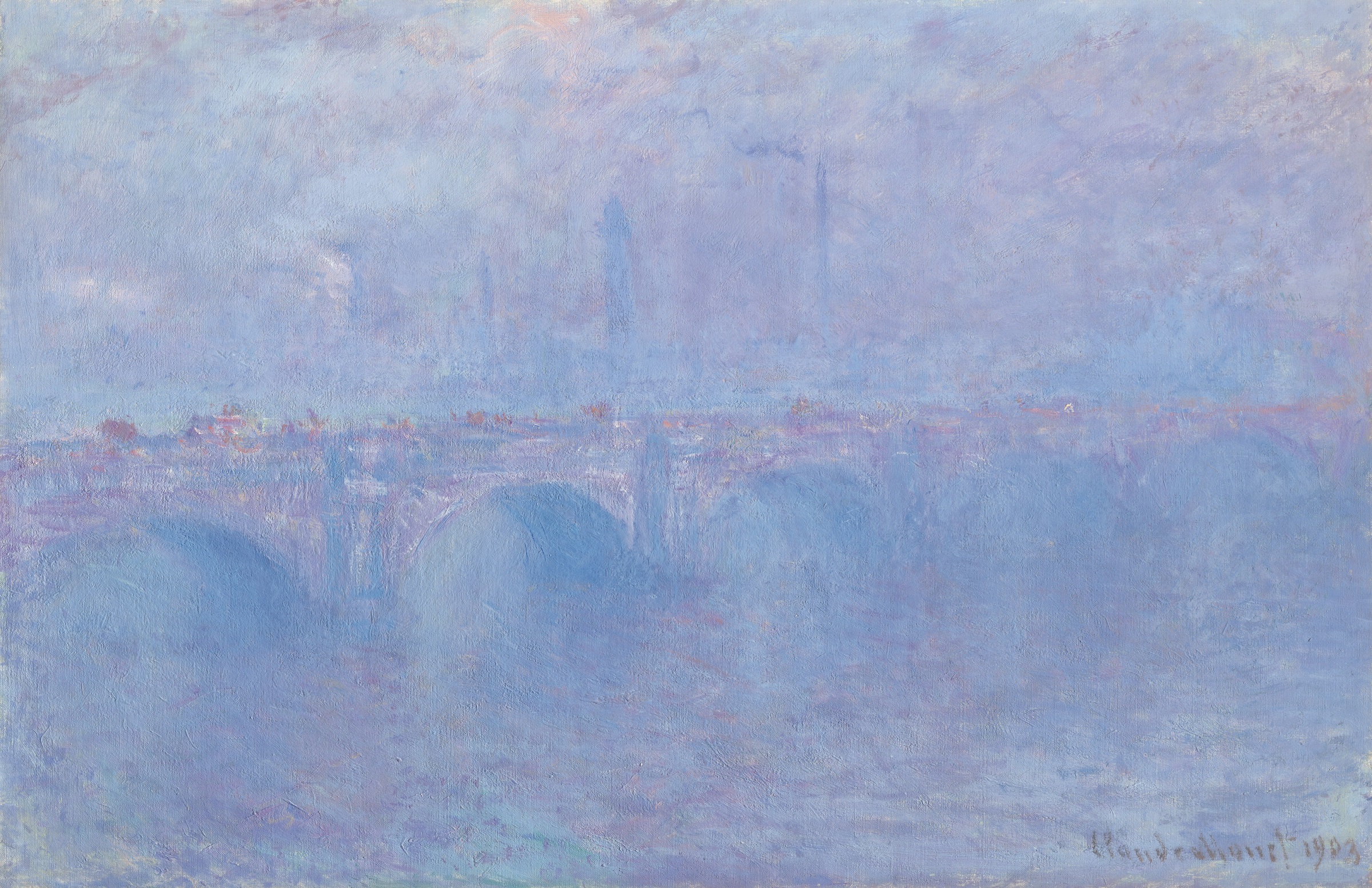A Modern Masterpiece
This May, Christie’s will present Claude Monet’s Waterloo Bridge, effet de brouillard, 1899-1903, Estimate on Request (in the region of $35 million) as a highlight of Christie’s newly introduced 20th Century Evening Sale. This rare and important painting is a fine example of Monet’s celebrated Waterloo Bridge series, an exquisite example of his capacity to capture the ephemeral, intangible effects of light on the River Thames. With these pivotal works, Monet effectively paved the way for the trajectory of 20thCentury Art as we now know it.
“I adore London, it is a mass, an ensemble, and it is so simple. What I like most of all in London is the fog... I so love London!” – Claude Monet in conversation with René Gimpel the celebrated London dealer.
Monet’s impassioned declaration is masterfully conveyed in Waterloo Bridge, effet de brouillard, one of the artist’s monumental, landmark series of London views, the Vues du Londres. Begun in London in 1899, this series remains one of the artist’s greatest achievements, as he transformed the city and its famed fog-filled skies into ethereal, timeless visions of the modern city. Of the three key subjects of this ambitious campaign, the Waterloo Bridge series is the largest, and is renowned for being the most radical and varied and also the most poetic and avant-garde. Waterloo Bridge, effet de brouillard is the finest example from this iconic series to be offered at auction for over a decade.
The finest works from this series are now housed in the great museums of the world, including the National Gallery of Art, Washington, the Art Institute of Chicago, The State Hermitage Museum, St. Petersburg and the Philadelphia Museum of Art. The present painting compares very favourably with each of these and like them was chosen by Monet to feature as one of eighteen Waterloo Bridges included in his ground-breaking 1904 exhibition, Claude Monet: Vues de la Tamise à Londres at the Galerie Durand-Ruel. Reacting to this show Georges Lecomte wrote that Monet had never “attained such a vaporous subtlety, such power of abstraction and synthesis”.
In Waterloo Bridge, effet de brouillard, Monet has pictured the panoramic eastward vista from the balcony of his hotel room at the fashionable Savoy Hotel. The expansive, waters of the Thames are traversed by the stone bridge that recedes toward the factory-lined south bank beyond. The entire scene is cloaked in an ephemeral, evanescent mist that is illuminated by the invisible sun beyond, its veiled presence casting the city into an extraordinary iridescent blue and pink light. Here, Monet performed alchemy with brush and pigment, deploying the most nuanced flickers and strokes of color to create a composition that has captured the vaporous quality of the atmosphere, and the magical power of light. In his quest to depict his impression of the scene that lay before him, Monet has transformed a fleeting vista of industrial London into a mysterious and deeply contemplative evocation that transcends the bounds of time and place.
“It’s a miracle,” wrote Octave Mirbeau. “It’s almost a paradox that one can, with impasto on canvas, create impalpable matter, imprison the sun…to make shoot forth from this Empyrean atmosphere, such splendid fairylands of light. And yet, it’s not a miracle, it’s not a paradox: it’s the logical outcome of the art of M. Claude Monet.” (Claude Monet, Vues de la Tamise a Londres, exh. cat., Galeries Durand-Ruel, Paris, 1904, p. 8).
Waterloo Bridge, effet de brouillard was one of the earliest London paintings to enter an American collection when it was acquired in early 1905 by the pioneering Pulitzer Prize winning poet, Amy Lowell. Waterloo Bridge, effet de brouillard remained in the Lowell family by descent until 1978, and was included in the Boston Museum of Fine Arts retrospective of masterpieces by Claude Monet held in America the year after the artist’s death in 1927.
